Catch me if you can: How the paiche plague in Bolivia's Amazon is making its way onto menus
This air-breathing aquatic monster has become far too comfortable in Bolivian waters. But, one chef is helping curb the problem by serving it on her native Bolivian menu, making it a useful ingredient and helping to rebalance the biodiversity too, finds Sorrel Moseley-Williams
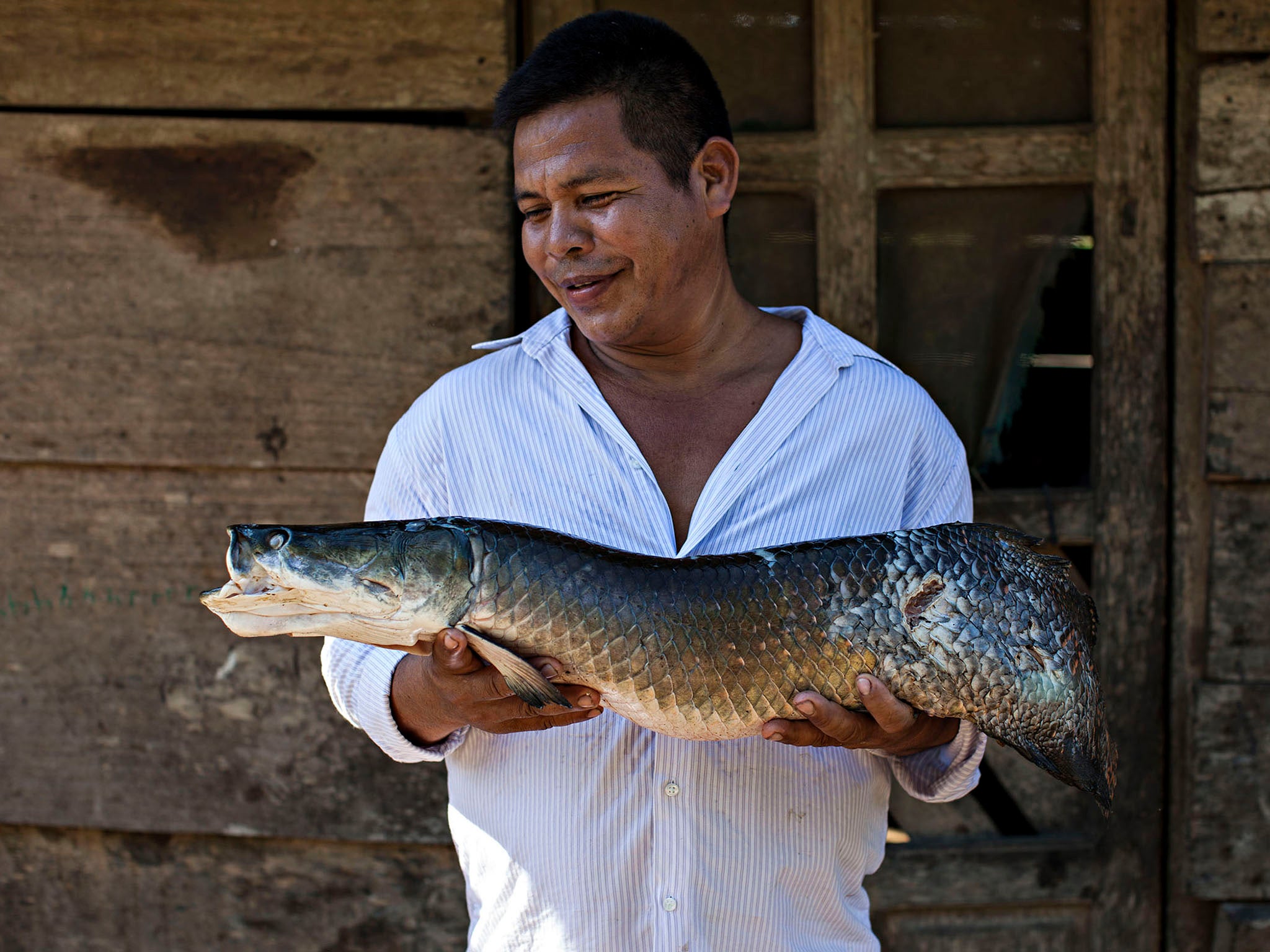
Your support helps us to tell the story
From reproductive rights to climate change to Big Tech, The Independent is on the ground when the story is developing. Whether it's investigating the financials of Elon Musk's pro-Trump PAC or producing our latest documentary, 'The A Word', which shines a light on the American women fighting for reproductive rights, we know how important it is to parse out the facts from the messaging.
At such a critical moment in US history, we need reporters on the ground. Your donation allows us to keep sending journalists to speak to both sides of the story.
The Independent is trusted by Americans across the entire political spectrum. And unlike many other quality news outlets, we choose not to lock Americans out of our reporting and analysis with paywalls. We believe quality journalism should be available to everyone, paid for by those who can afford it.
Your support makes all the difference.It’s a suffocating afternoon in Carmen del Emero, Bolivia, but Nelo Yarari Alipaz is oblivious to the humidity and relentless buzzing. The community leader of this remote village in Bolivia’s Amazon – accessible only by a nine-hour boat ride – is ready to talk business with one of Bolivia’s top chefs, Marsia Taha, who runs Gustu restaurant in the capital La Paz.
But before they converse, Alipaz (known as Don Nelo to everyone) shares his goals. “We live sustainably, raising chickens and pigs, catching fish and harvesting wild cacao but we need an income to pay for phone lines and provide internet for the school. Actually, I feel like we’re losers compared with other communities along the river but the truth is, we don’t want donations: we want to work and sell products sourced from our environment to Gustu and other restaurants.”
Home to around 65 families from the Tacana indigenous community, Carmen del Emero’s location on the Beni river has always assured the community a wealth of edible riches such as surubí, pintado (both types of catfish) and pacu (freshwater fish related to the piranha), fish they either consume or sell at market in Rurrenabaque, the gateway town to Bolivia’s Amazon.
But a new species has been causing a stir in the cola-coloured waters – and both Don Nelo and Taha of Gustu are keen to strike a deal. The corregidor is keen to ensure a new source of income for his people while the chef wants a regular supply of native ingredients for her strictly Bolivian menu. The paiche plague could be the answer.
Although native to the Amazon basin, paiche (Arapaima gigas, also known as pirarucu) is a recent addition to Bolivia’s lakes and rivers. According to Omar Torrico, who is responsible for monitoring conservation and climate change management for the Wildlife Conservation Society – the NGO that has brought Gustu and Carmen del Emero together for this initial business meeting – this obligate air-breather is a predator that’s made itself way too comfortable in Bolivia.
“In the 1980s, flooding in neighbouring Peru led this freshwater fish to escape into the north of the country. But it only came to the attention of Carmen del Emero’s fishermen about four years ago,” he says.
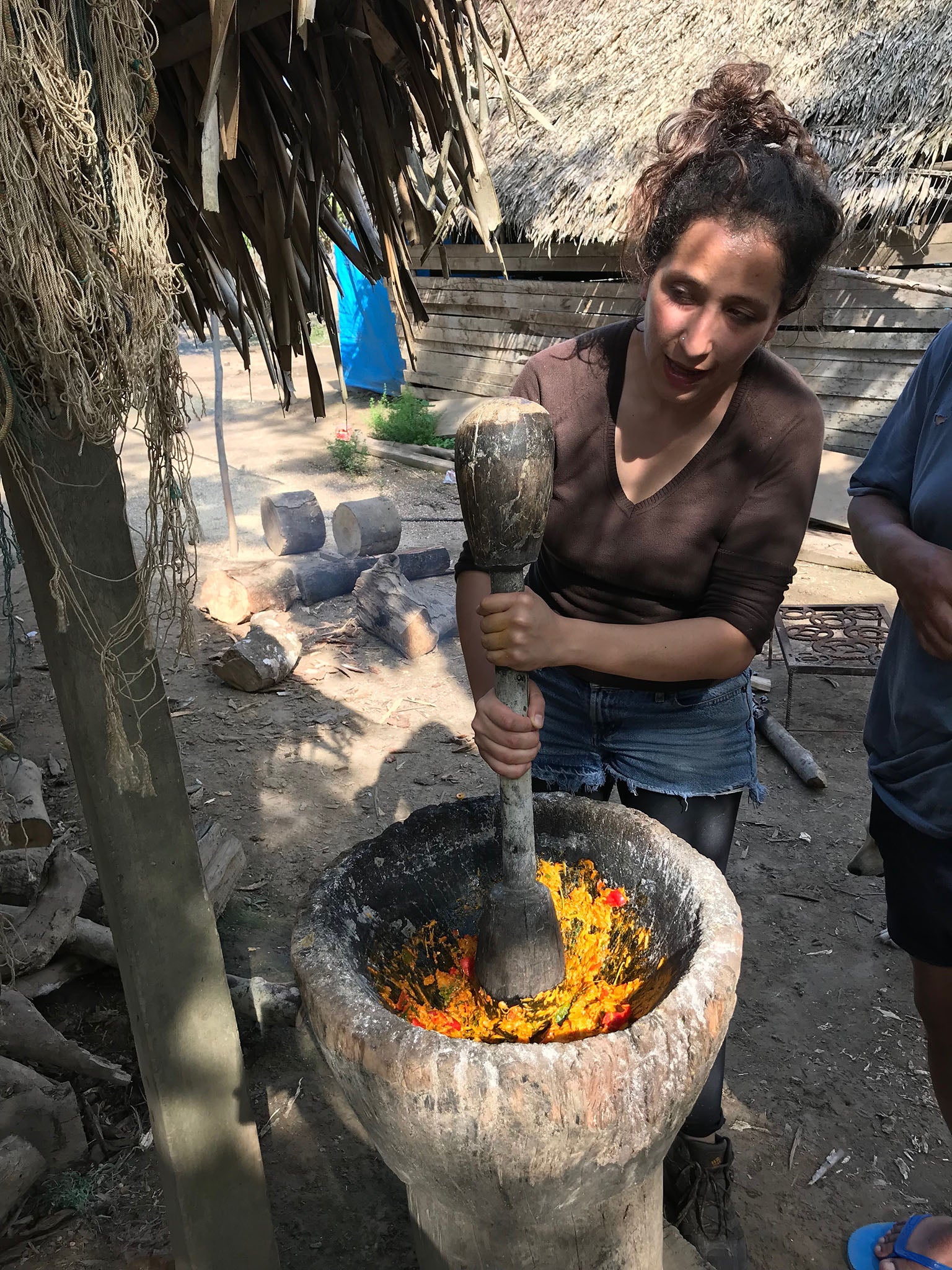
One of the world’s largest freshwater fish, the omnivorous paiche easily grows to 2.5m (though it can reach four) in length and 150kg. Given the lack of aquatic competition in Bolivia’s waters, it gobbles down catfish, crustaceans and small fish such as piranha, basically anything that crosses its path.
“It’s been very successful colonising our waters,” adds Torrico. Paiche is also smart: this predator is always looking for food, knows how to avoid nets and traps, and when it does get entangled can often perform an escape routine Houdini would be proud of. Oh, and akin to an Amazonian Jaws, paiche also stalk small boats...
That same sweltering afternoon, Chef Taha and I hike through the jungle to the tune of an Amazonian avian chorus, rubber boots slopping through the muddy trail, to climb into a wobbly peque, a canoe carved from a tree trunk that’s prone to letting in water, with fisherman Walter Yarari Alipaz. He guides us through the murky waters of Motocuzal lake and within minutes, paiche start vigorously leaping about. Catch me if you can, they seem to be saying.
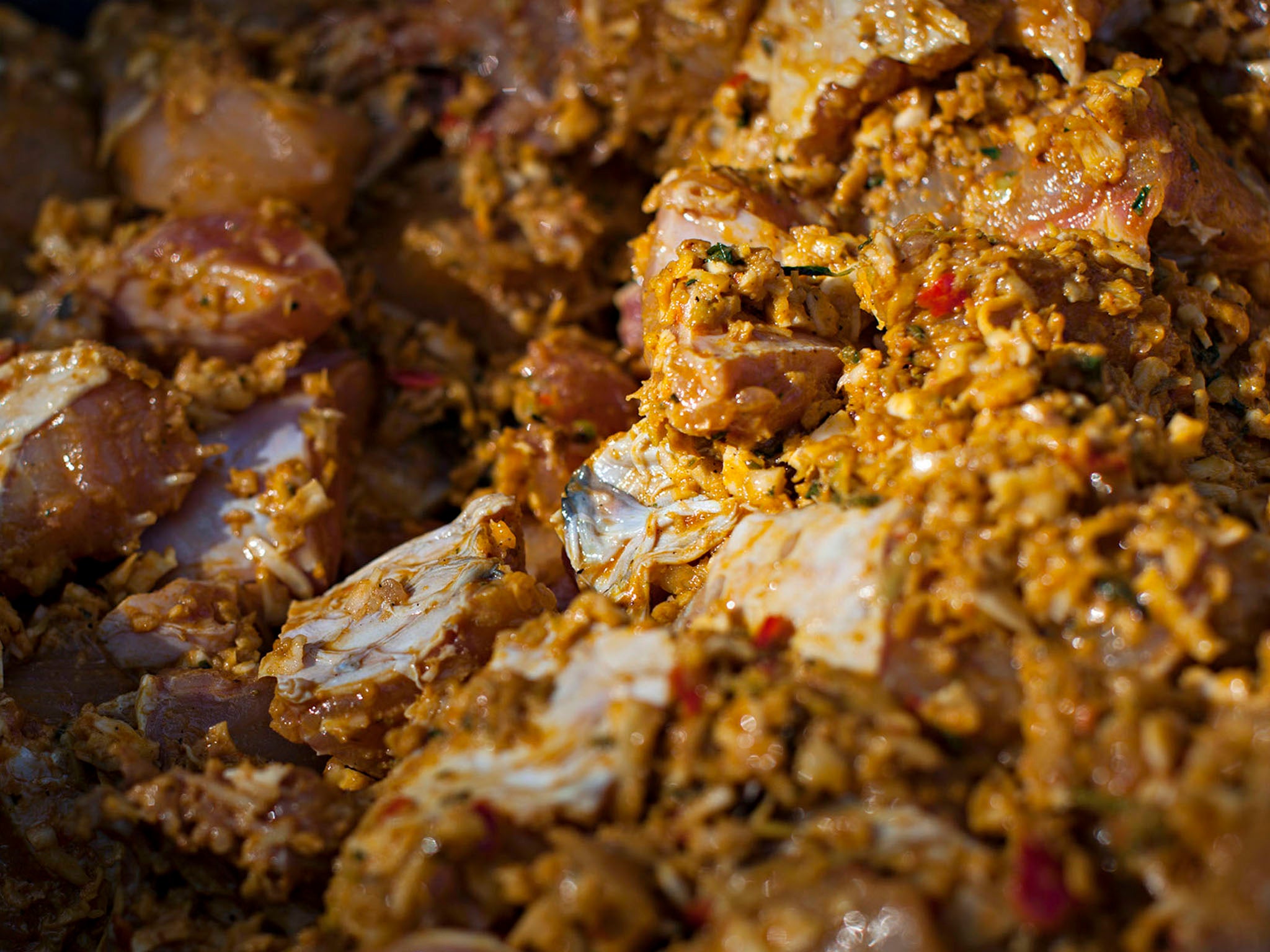
Tying up to a tree trunk on the shore, we cast lines, hoping for some kind of bite. Paiche are way too clever to be lured by simple frog snack and the fishing mission is unsuccessful. But as we paddle back to base camp, a heavy breather is in pursuit. The low rumbling is a paiche in hunting mode, toying with us, playing with our emotions that actually, we can’t catch it. We vow to return and even the score.
The following morning, we check nets, traditionally laid down to score surubi and pacu, but Carmen del Emero’s fishermen have now realised that a more important prize is at stake. Not only is paiche’s meat valuable (and delicious), its thick, shiny orange scales are used to create handmade curtains while its skin is suitable for leather; Brazilian designer Osklen creates footwear from paiche. And catching it evens up the environmental score.
After a vigorous battle, three are nailed and are brought back to shore within 30 minutes, occasionally wriggling on the leafy jungle floor for a final gasp of warm air. A particularly energetic specimen leaps a metre back towards the lake and is quickly put out of its misery for its efforts. A further hour untangling these gill-less predators brings home a total of six measuring between 76cm to 91cm in length, a lucrative haul.
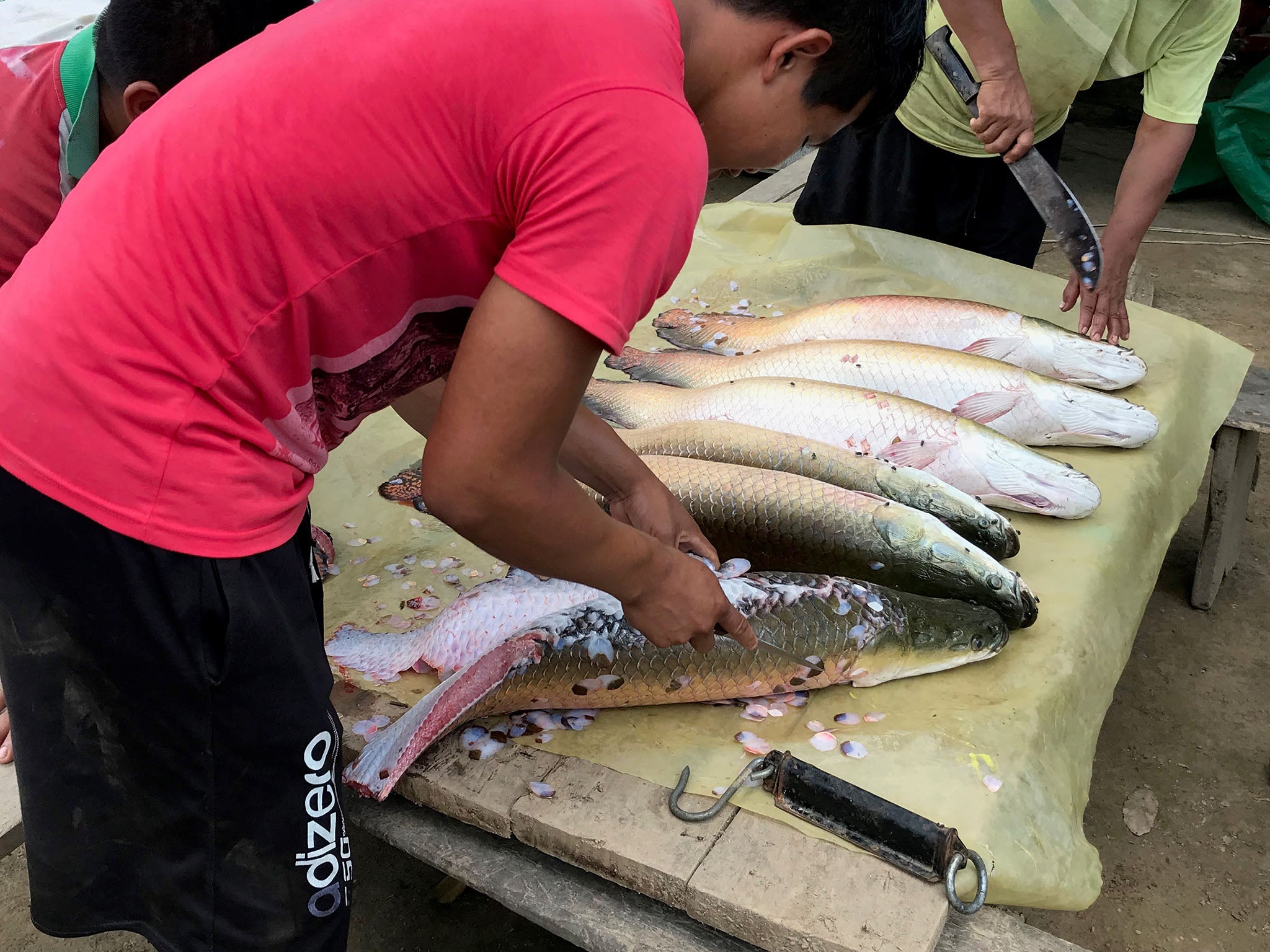
“Don’t feel sorry for paiche,” says Torrico. “It’s a plague and catching it benefits biodiversity in Carmen del Emero and Motocuzal lake. We want to control it as it’s upsetting the balance, so it has less of an impact on the environment; both humans and paiche eat piranha so they’re in competition on the food chain, for example.”
Gustu, which was set up by Noma’s Danish co-founder Claus Meyer in 2013, already serves paiche, but Chef Taha is keen to establish a reliable source. It won’t be easy, however, given the complex logistics: for the nine-hour boat ride to Rurrenabaque, fish would be stored inside a freezer powered by an onboard generator, then embark upon a 10-hour drive through the Amazon and up over the Andes to Bolivia’s capital. But it will be worth the effort to have paiche as a regular fixture at Gustu.
“Don Nelo offered us 35 bolivianos a kilo (£4), but it’s a bit cheap in our opinion, so I’ve asked him for a truer price that would include transport and ensure the community makes money and won’t suddenly stop the supply chain. I’d like to receive 60kg every fortnight as the plan is to include tacuara, a traditional Amazonian cooking method that prepares fish inside a bamboo pole, to Gustu’s tasting menu,” she says.
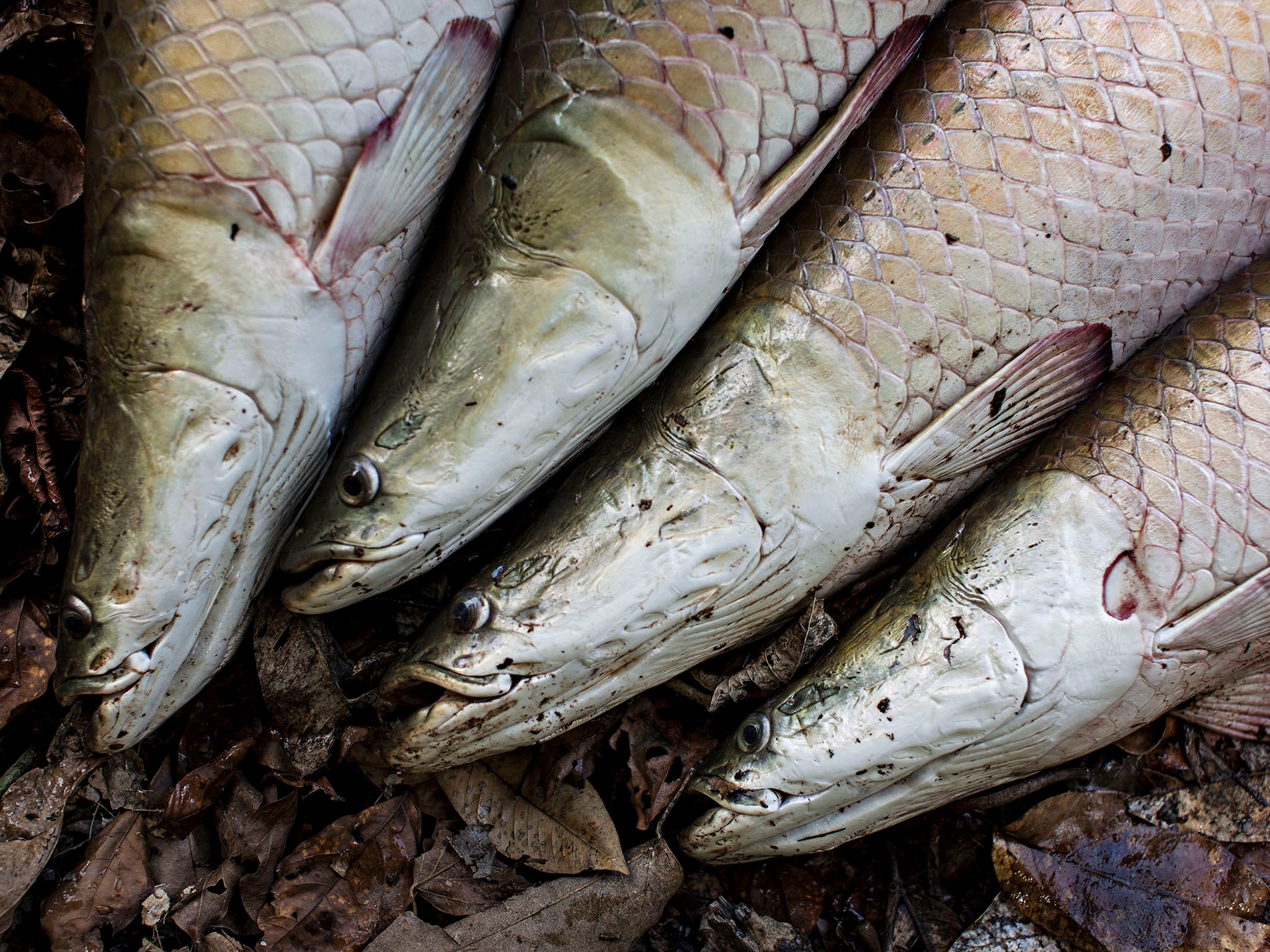
Back at Carmen del Emero, a team taps off scales with machetes before carefully skinning and filleting the day’s catch on a slab of wood under palm trees, occasionally waving off curious piglets and dogs.
It’s a laborious task, with paiche proving as tricky out the water as it is in. I ask Don Nelo how he likes to eat it. There’s a pause before the community leader admits he’s never tried it before.
There was a rumour that a fisherman had found a human bone inside a beast of a paiche, and the community has never dared cook it, preferring to subscribe to the human-devouring myth and sell it on.
But Taha and colleagues from La Paz’s Jardín de Asia restaurant and ámaZ in Lima, also on this expedition to learn more about Bolivian Amazonian ingredients, are determined to change that perspective. They set about cooking a light paiche curry for 50 fishermen and their families while also grilling paiche, the first time it will have been consumed in Carmen del Emero.
Using the community’s enormous pestle and mortar, she mashes down fresh ingredients including garlic, green mango, wild basil and red chili peppers for her sauce while ámaZ’s Mauricio Bonbar tends to the coals.
As dusk turns into a clear star-studded night, members of the community bring bowls from their small wooden houses to fill up with fish curry, smoked yuca (cassava) and orange mash, and hunks of grilled fish.
How did Don Nelo enjoy dinner? “Delicious,” he says. “I’ll definitely eat paiche again.”
Join our commenting forum
Join thought-provoking conversations, follow other Independent readers and see their replies
Comments